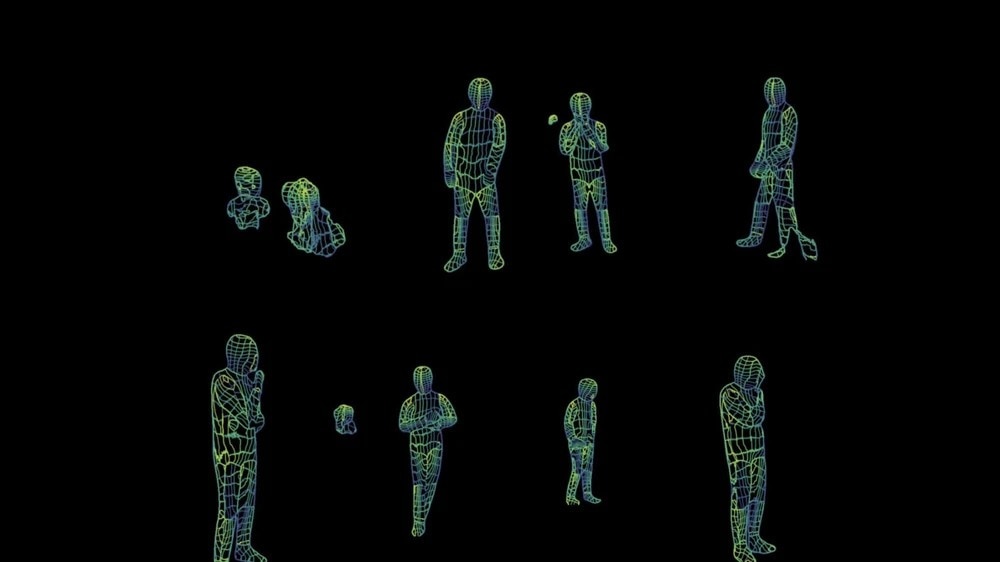
By using WiFi signals and DensePose, a Wifi router can see 3D objects through a wall. (Image Credit: Carnegie Mellon University)
Carnegie Mellon University researchers engineered a WiFi router to work with DensePose to detect humans and their movement behind a wall. DensePose, created by researchers from London and Facebook’s AI lab, is an AI system that maps every pixel on the surface of a human body in an image. Their AI system can identify more than two dozen points in the body, including joints, the head, torso, and arms.
This see-through tech relies on three WiFi transmitters and receivers to map the phase and amplitude of the antennas. Doing so allows it to identify a reflected signal’s distance and direction. That data is then fed into the team’s AI system, which reconstructs a human’s pose and movement in a radar-like image. That capability worked effortlessly even if a wall was present between the subjects and routers.
Their technique can be used with WiFi routers to see through many different obstacles like wooden fences, drywall, and concrete walls. According to the team, WiFi signals “can serve as a ubiquitous substitute” for RGB cameras. The team believes that using WiFi could eliminate poor lightning and occlusion that regular camera lenses deal with. This technology could be used in a house to detect and flag suspicious behavior.
The team added, “In addition, they protect individuals’ privacy, and the required equipment can be bought at a reasonable price,” they wrote. “In fact, most households in developed countries already have WiFi at home, and this technology may be scaled to monitor the well-being of elder people or just identify suspicious behaviors at home.”
Have a story tip? Message me at: http://twitter.com/Cabe_Atwell
